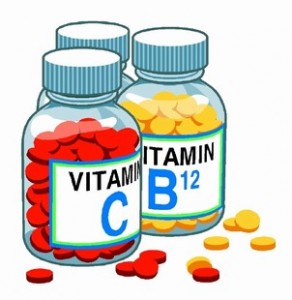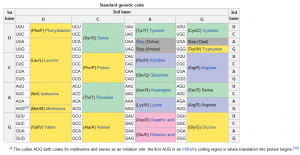These days, if you walk through every pharmacy store , you will see a variety and abundance of different vitamin pills due to the widespread use of these supplements.However, are people really aware of the effects of these pills? There are controversies over using these supplements.
Human body needs 13 types of vitamins to work properly : A, C, D, E , K and the eight B vitamins. Each of the vitamins has different advantages for our bodies and can be found in different nutrients. Most of the people take vitamin pills since their daily diets do not provide enough natural vitamins for their bodies.
(picture from: https://blogs.ubc.ca/communicatingscience2012w109/files/2012/10/vitamin-pills1.jpg )
However, studies show different results for popping vitamin pills.
One category of studies associate benefits with vitamin supplement consumption. For example, a number of studies show that these supplements improve cognitive skills and decrease the rate of mental decline.
The second category of studies show no effects associated with supplement consumption.For instance, a study was done over the course of eight years with about 8,000 participants.The overall health conditions of the participants who took the real pill daily (which contained vitamin C, vitamin E, beta-carotene, selenium and zinc,) and the ones who took the placebo pills daily ( the pill with the same appearance of the real one but without the capacity to function) showed almost the same trend .
The third category of studies, in contrast, show that consuming vitamin pills can be harmful. For example, according to two of the studies, the likelihood of developing different types of cancer such as malignant cancer( the most severe type of skin cancer) and breast cancer was more in participants who took particular types of vitamin supplements. Another study also suggests that using supplements such as multivitamins increases the mortality rate.
What should we do despite all the contradictory results from different studies about the cons and pros of taking vitamin supplements ? According to an article ,having a healthy diet is the most important step . However, taking one multivitamin tablet as well as vitamin D tablet per day can help people who do not have an optimal diet, but the important thing to remember is that we should not over use vitamin supplements.The article argues that the disadvantages of the supplements are outweighed by their advantages.Another article states that foods contain natural vitamins as well as other plant substances such as phytochemicals ( plant chemicals that prevent disease) that cannot be put in the vitamin pills ;Therefore, it is much better to have a healthy diet rather than taking vitamin pills.
In the video below,uploaded by ” psychetruth” ,Dr. Vincent Bellonzi gives more information about whether we should take vitamin supplements or not.
(www.youtube.com/watch?v=Aa6-jmVhbcU&feature=related)
Maryam Goharian
Sources:
benefits: http://www.business-standard.com/generalnews/news/daily-multivitamin-tablets-can-boost-memory-study/65391/
http://www.dailymail.co.uk/health/article-2078861/Taking-multi-vitamin-pills-does-health.html
http://www.medicinenet.com/melanoma/article.htm
http://www.cosmosmagazine.com/news/4829/vitamin-pills-do-more-harm-good
http://www.health-alternatives.com/vitamins-nutrition-chart.html
http://www.hsph.harvard.edu/nutritionsource/what-should-you-eat/vitamins/index.html
http://www.phytochemicals.info/
http://www.netdoctor.co.uk/dietandnutrition/feature/vitamins.htm
picture from:
https://blogs.ubc.ca/communicatingscience2012w109/files/2012/10/vitamin-pills1.jpg
video from:
www.youtube.com/watch?v=Aa6-jmVhbcU&feature=related














